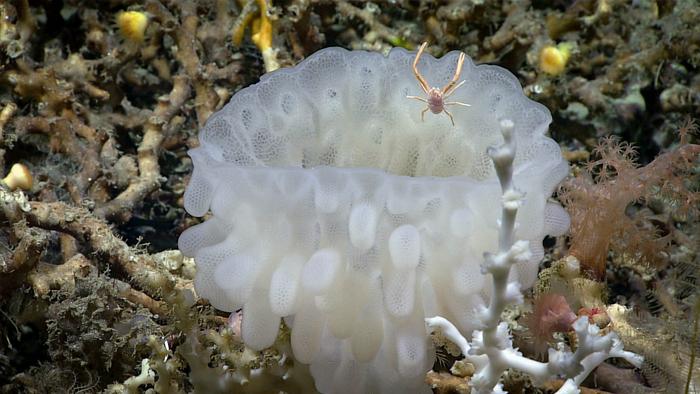In the vast and intricate world of genetics, there lurks a fascinating class of DNA elements that challenge our fundamental understanding of genome evolution. These are called “introners,” a form of transposable element that acts like molecular hitchhikers—jumping not only within the genome of a single species but astonishingly leaping across the boundaries between unrelated organisms. A groundbreaking study recently published in the Proceedings of the National Academy of Sciences has unveiled that introners are key agents in the generation of new introns and, even more startlingly, in their horizontal transfer between vastly different species. This discovery offers profound insights into how genomic complexity arises, independently of natural selection, and opens new avenues for exploring genetic disease and evolutionary biology.
DNA is commonly perceived as a carefully encoded blueprint that directs the formation and functioning of every living organism. Yet not all DNA sequences serve their host in straightforward ways. Many sequences, such as transposable elements, behave like genetic parasites, replicating themselves at the expense of genomic stability or efficiency. Introns—noncoding segments interspersed within genes—must be precisely excised through splicing mechanisms before a functional protein can be produced. The origins and proliferation of these introns have long puzzled scientists. This new research shows that introners, a subset of transposable elements, are a driving force behind the exceptional diversity and abundance of introns in the genomes of eukaryotic life forms.
Russ Corbett-Detig, a professor of biomolecular engineering at the University of California, Santa Cruz, together with Landen Gozashti—now a distinguished postdoctoral fellow at UC Berkeley—have dedicated years to unraveling the mystery surrounding introner behavior. Their pioneering investigation combined cutting-edge computational genomics with the unprecedented availability of thousands of high-quality genome sequences from diverse species. This rich tapestry of genomic data, gathered through initiatives like the Earth BioGenome Project and the Sanger Tree of Life, permitted for the first time a comprehensive survey of introner distribution and evolutionary dynamics across the tree of life.
Their work has cataloged over a thousand distinct introner families across more than 8,700 genomes, revealing not only their widespread occurrence but also a surprising diversity. Introner abundance was notably high in algae, fungi, and a broad range of single-celled eukaryotes, yet intriguingly also present in higher organisms such as sea urchins and tunicates. This wide distribution suggests that introners have exploited evolutionary opportunities to propagate through many ecological niches and evolutionary lineages, effectively rewriting genetic landscapes by inserting new introns into unsuspecting genomes.
One of the most revolutionary findings of this research lies in its demonstration of horizontal gene transfer (HGT) of introners between unrelated species. Unlike vertical transmission—gene transfer from parent to offspring—HGT allows genes or genetic elements to move between species that do not interbreed, an event once thought to be rare or insignificant in complex eukaryotes. The team identified eight concrete instances where introners crossed substantial evolutionary divides, including a striking example involving a glass sponge and a marine protist known as a dinoflagellate. These species share a common ancestor stemming back approximately 1.6 billion years, rendering classical inheritance impossible to explain the introner similarities.
This evidence definitively proves that introners can “jump” across species barriers, likely facilitated by viral vectors. Viruses, themselves selfish genetic elements, may unknowingly act as molecular taxis, shuttling introners from one host’s DNA to another’s in a form of genomic hitchhiking. Such interactions underscore the complex interplay of selfish elements within ecosystems and hint at the immense potential for viral-mediated genetic innovation or destabilization, depending on context.
The realization that many new introns arise through introner activity shifts the paradigm regarding genome architecture. Instead of purely being products of selective advantage or gradual mutation, much of genomic complexity might stem from these selfish, replicative elements’s inherent ability to infiltrate and multiply. While some intron insertions may ultimately confer benefits, many appear to be neutral or even deleterious, highlighting the mosaic nature of genome evolution where “cheaters” and “helpers” coexist in delicate balance.
Corbett-Detig emphasizes that the observed eight interspecies transfers are likely only a glimpse of a much larger phenomenon. Considering that the analyzed dataset represents an infinitesimal fraction of Earth’s biodiversity—approximately 8.74 million eukaryotic species are estimated to exist—the incidence of horizontal introner transfer may be widespread and continuously shaping genomic evolution in the biosphere. This prospect underscores the importance of expanding genome sequencing efforts and developing sensitive analytical tools to capture and interpret these elusive yet impactful events.
The broader implications of this study touch upon the understanding of genetic diseases and species adaptation. As researchers decode the rules governing introner dynamics and their transfer mechanisms, potential strategies may emerge to manipulate alternative splicing pathways or to detect previously unrecognized sources of genomic instability. These advances could contribute to innovative therapies targeting splicing-related disorders and complex hereditary diseases.
Moreover, this research reframes how scientists comprehend the genomic mosaic that constitutes life on Earth. Rather than viewing genomes as stable, species-specific entities, they appear as dynamic, often permeable constructs shaped by a diverse network of mobile elements interconnected through ecological and evolutionary processes. Viruses, introners, and host genomes engage in an intricate dance—an evolutionary drama unfolding over billions of years, continually reshaping the biological narrative.
Subject of Research: Horizontal gene transfer of introner transposable elements contributing to new introns in eukaryotic genomes
Article Title: Horizontal transmission of functionally diverse transposons is a major source of new introns
News Publication Date: 22-May-2025
Web References: https://doi.org/10.1073/pnas.2414761122
References: Proceedings of the National Academy of Sciences, article DOI: 10.1073/pnas.2414761122
Image Credits: Image courtesy of the NOAA Office of Ocean Exploration and Research, Windows to the Deep 2018
Keywords: introners, transposable elements, horizontal gene transfer, introns, genome evolution, alternative splicing, selfish DNA, eukaryotic genomes, viral vectors, genetic complexity
Tags: evolutionary biology and intron researchgenetic disease and intronershorizontal gene transfer in geneticsimplications of genetic parasitesintroners and genomic evolutionmechanisms of intron proliferationmolecular hitchhikers in DNAnew insights into DNA sequencesnoncoding DNA and genome functionrole of introns in gene expressiontransposable elements and genetic complexityunderstanding intron origins and functions





